Bloomsday Commemoration (June 16 – In-Store Tasting) Jurassic Odyssey: Exploring Burgundy’s Golden Gate with Eight Producers in Four Appellations (11-Bottle Pack $344)
2022 marks the hundredth anniversary of the release of James Joyce’s modernist masterpiece ‘Ulysses’, and a few venerable souls who purchased a copy on the day it came out are still trying to wade through it. Not everyone agrees on the genius of the work—a florid, stream-of-consciousness ramble through Ireland’s capital city over the course of a single day (June 16, 1904) featuring Leopold Bloom, his wife Molly and would-be-writer Stephen Daedalus—but everyone can appreciate the remarkable image painted of Dublin at the turn of the century; the people, the streets, the offices, the brothels and above all, Davy Byrne’s pub:
“Nice wine it is. Taste it better because I’m not thirsty…. Mild fire of wine kindled his veins. I wanted that badly…. Glowing wine on his palate lingered swallowed. Crushing in the winepress grapes of Burgundy. Sun’s heat it is.”
June 16 is known as ‘Bloomsday’ and is commemorated by Joyce fans across the globe. At Elie’s, we prefer to take our own literary license and use the occasion to celebrate Bloom’s passion, ‘the winepress grapes of Burgundy’ with our own amble through Burgundy’s unparalleled countryside.
We will be pouring a variety of Burgundies on premise on Thursday, June 16 (noon to 7pm), and you are invited to join us in a literary and gustatory toast to James Joyce and Chablis, Burgundy’s green gold.
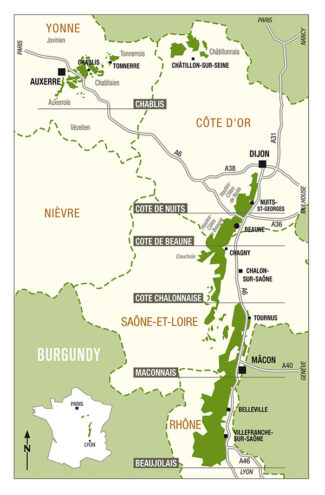
We are pleased to offer one bottle of each of the following eleven wines for an inclusive price of $344. Happy Bloomsday Day.
Burgundy’s Golden Gate:
Chablis and Grand Auxerrois
James Joyce appreciated France (he studied at the Sainte-Geneviève Library) and France appreciated him back—‘Ulysses’ was first published at Sylvia Beach’s Paris bookstore, Shakespeare and Company and printed in Dijon by Maurice Darantieres.
A hundred miles below the 6th Arrondissement (the location of the bookstore) and about the same north of Dijon, the valleys and wooded hilltops of Chablis begin, with vineyards festooning the slopes that run alongside the pretty River Serein—aptly translated to ‘the serene river.’ Spanning approximately 10,000 acres and encompassing 27 communes, there are 40 vineyards classified as Premier Crus and seven Grand Crus.
In terms of terroir fanaticism, Chablis is first among equals in France. The key divide in quality levels lies between vineyards planted on Kimmeridgian soils and those with Portlandian soils. Kimmeridgian is more highly regarded; it contains greater levels of mineral-rich clay, as well as the essential marine fossils which are responsible for its significant lime content. Kimmeridgian soils are the source of the trademark ‘goût de pierre à fusil’, or gunflint, which can be preserved in the best wines for decades.
The wines of Chablis, at whatever level (Chablis Grand Cru, Chablis Premier Cru, Chablis and Petit Chablis) are Chardonnay and nothing but; all but the most heralded are vinified and aged without oak, giving them the greenish gold hue that exemplifies the appellation as well as the classic minerality of the nose.
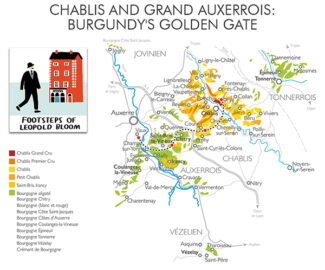
Grand Auxerrois: A Varied Range of Appellations
Once you learn to drop the ‘s’, Chablis rolls across the tongue as easy a chilled mouthful of Vaudésir. Grand Auxerrois not so much—it’s a fair bet that plenty of Chablis lovers have never even heard of it. But there it is, hovering just below the lauded Chablisean radar, occupying territory so close to Chablis that near Les Beauregards it touches, and extends west toward Champagne. And just as variations in soils and subsoils across Champagne give the wines different personalities, the Grand Auxerrois’ patchwork of soil types give the wines a range of textures, mineral and fruit flavors. Like Chablis, The Grand Auxerrois is located on the famous patchwork of limestone that stretches from the White Cliffs of Dover, through Chablis, past Burgundy, and into the Loire Valley.
Like almost all wines in Burgundy, Grand Auxerrois wines can be labeled with the usual AOP Régionales—Bourgogne, Bourgogne Aligoté, Bourgogne Passe-tout-grains, Coteaux Bourguignons and Crémant de Bourgogne. Unlike Chablis, however, the production is not limited to Chardonnay. Saint-Bris is known for its Sauvignon Blanc while red Bourgogne Côtes d’Auxerre offers a classic Burgundian Pinot Noir profile with red berries, minerality and a palate that is similarly silky on the tongue. Rosé is also made, but little gets exported.
Saint-Bris
Having held VDQS status since 1974, Saint-Bris was established as an AOP in 2003. Since its wine is built around Sauvignon Blanc and/or Sauvignon Gris, it may sound like a Burgundian iconoclast, but a quick glance at a map shows that it is twice as far from Beaune as it is from Sancerre and has a similar terroir to much of the Loire Valley.
Saint-Bris soils are derived from various Jurassic limestones ranging from Portlandian to Kimmeridgian. Alluvial soils and fossiliferous Kimmeridgian limestone is found alongside the river and at the foot of marly slopes; the best situated plots are on the open hillsides facing north, so maturation takes place under conditions which favor the wine’s fruit-forward profile.
Clément Lavallée, Vigneron
Clément Lavallée may have been born into a family of Chablis growers, but he had no interest in following those footsteps until he had made his own across the wine world. At the age of 15, he set out on a Bloomsday-worthy peregrination with educational stops in Domaine Verret in Saint-Bris and continued on to Domaine des Terres de Velle and Armand Heitz in the Côte de Nuits. After a detour in Beaujolais, the next stop was at Château Margaux, then Domaine Chapoutier, and concluding in Australia at Rutherglen, the culmination of a journey that led Clément to not only discover new winemaking techniques but also to discover himself. In 2018, he was ready to make his own mark, buying a few acres of land in Chablis and purchasing grapes from Saint-Bris and Côtes d’Auxerre. After his first vintage (2019), his father decided to give him a further eight acres of vineyards in Chablis, Cotes d’Auxerre, and Saint-Bris appellations.
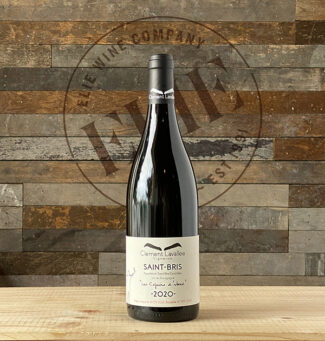 Clément Lavallée ‘Les Copains d’Abord’, 2020 Saint-Bris ($35)
Clément Lavallée ‘Les Copains d’Abord’, 2020 Saint-Bris ($35)
Harvested from a sustainable, 30-35-year-old, two acre lieu-dit : the vines are planted with a western exposure on loam-covered limestone where a large number of surface stones represent the degradation of the parent rock. After pneumatic pressing, must and gravity settling and gentle racking at low temperature, the wine goes through alcoholic and natural malolactic fermentation in neutral oak. The wine is then matured for 11 months on fine lees in 228 and 350 L oak barrels and bottled with light bentonite fining.
The wine shows striking aromas of gooseberry, pear, orange oil, mint and white flowers, with chalky grip and a penetrating, satiny and precise finish. (2032 bottles produced.)
Bourgogne Côtes d’Auxerre
An appellation that covers both red and white wines, the boundaries of Bourgogne Côtes d’Auxerre run along either side of the river Yonne and boast an ancient lineage thanks to the abbey of Saint-Germain and its proximity to Paris.
Part of Bourgogne’s ‘golden gate’, the vineyards lie on Jurassic limestones, both Kimmeridgian and Portlandian.
Clément Lavallée, Vigneron
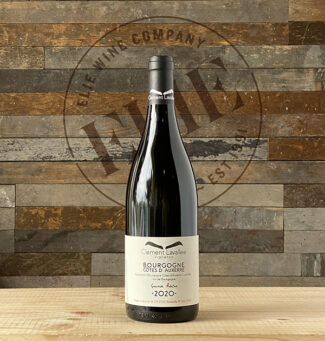 Clément Lavallée ‘Grand Roche’, 2020 Bourgogne Côtes d’Auxerre Blanc ($36)
Clément Lavallée ‘Grand Roche’, 2020 Bourgogne Côtes d’Auxerre Blanc ($36)
From a 31-year-old, two-acre plateau climat where Chardonnay vines are planted in deep but stony soils, Clément Lavallée produced a mere four barrels of this luscious wine. It shows citrus, Anjou pear, green apple and white flowers, elegantly fleshy and nicely concentrated. (1424 bottles produced.)
Le Domaine d’Edouard
Edouard Lepesme is at the forefront of a young cadre of winemakers who are intent on returning the global profile of the Côtes d’Auxerre to the glory it formerly enjoyed. In 2011, he left a promising career in marketing to pursue winemaking. After studying with some of the great names in France and abroad, he purchased 33 acres from Andre Donat, whose father was a local legend in the area when, in the 1960s, he planted Pinot Noir, Chardonnay, Aligoté and Gamay Noir. In the Vaux-Auxerre, Lepesme found the prized chalky limestone terroir of Chablis and set out to produce a high-quality wine that would elevate the name of his hometown using 100% organic viticulture. Lepesme maintains a very hands-off approach (other than manual harvesting) employing indigenous yeasts, low sulfur and no oak, resulting in very pure, expressive and high-tone wines.
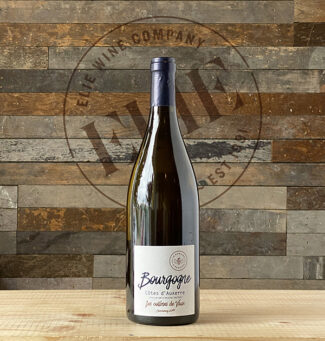 Le Domaine d’Edouard ‘Les Collines de Vaux’, 2019 Bourgogne Côtes d’Auxerre Blanc ($27)
Le Domaine d’Edouard ‘Les Collines de Vaux’, 2019 Bourgogne Côtes d’Auxerre Blanc ($27)
This Chardonnay-based cuvée is a blend from three plots, one of them old vine. The one-year aging is mixed between wines vinified and aged in vats on fine lees, and others vinified and aged in 228 liter and 350 liter casks. This unique process of double-aging brings power, structure and complexity to the wine, but also helps to develop the aromatic richness of the cuvée. This subtle application of wood frames a ripe but elegant and well-layered nose of hazelnut, buttery brioche and citrus notes.
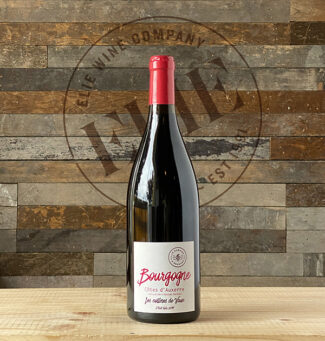 Le Domaine d’Edouard ‘Les Collines de Vaux’, 2019 Bourgogne Côtes d’Auxerre Rouge ($29)
Le Domaine d’Edouard ‘Les Collines de Vaux’, 2019 Bourgogne Côtes d’Auxerre Rouge ($29)
Says Edouard Lepesme: “The 2019 vintage is for us the most beautiful of recent years, it represents our terroir and what we want to offer our customers. Perfect balance between freshness, finesse, complexity and delicacy fruitiness of a Pinot Noir from northern Burgundy.”
Fragrant and luscious, ‘Les Collines de Vaux’ is a serious wine with the crunch and tang of Northern France, but displays a ripe cherry sweetness and a firm tannic backbone for balance.
Chablis: A White Wine with Mineral Notes
When Chardonnay is grown in climates that are less than ideal, resulting flaws are often tempered by oak. If such wines are described as cedary, buttery, vanilla-like or toasty, and chances are, the taster is defining qualities derived from the barrels used to ferment or mature the wine, because these are not qualities of the grape itself. Mineral notes like chalk, slate, schist or even powdered silica are the domain of the fruit; they are Chardonnay flavors, most of derived from the soil in which the grape vine grows.
Chablis—Burgundy’s most northerly appellation—produces the world’s most bracing and refreshingly uncluttered incarnation of Chardonnay. In Chablis, traditions are born of an ego that is mostly justified, and winemakers insist that the expression of the fruit be pure. That is not to say that no Chablis sees oak; the best certainly do. It’s just that the whole approach to what barreling is supposed to accomplish in a glass is viewed differently in this rocky, chilly, outpost, less than a hundred miles from that other bastion of varietal purity, Sancerre.
Chablis is subdivided into four AOPs based on quality factors which nearly all come down to soil and slope and grape yields. The largest of these, simply called Chablis, covers about sixteen thousand acres; the smallest, designated Grand Cru, is only a couple hundred acres in size and is limited to seven vineyards. To Chardonnay fans, these are like the seven celestial Pleiades in Greek mythology; their name on a Chablis bottle is tantamount to magic and an expectation thereof. The Premier Cru designation can be affixed to any of seventy-nine vineyards on both sides of the River Serein; the best occupy the right bank near the Grand Crus; the rest are southwest of the city of Chablis.
It remains testimony to Chablis’ ‘amour-propre’ that the district is willing to count on breeding, not masking, to show off its wares.
Clément Lavallée, Vigneron
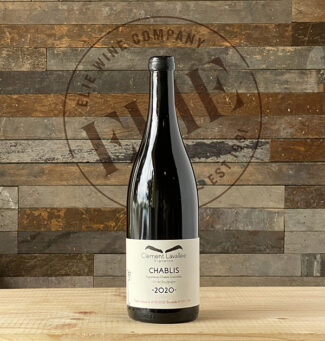 Clément Lavallée, 2020 Chablis ($39)
Clément Lavallée, 2020 Chablis ($39)
Eschewing herbicides, Lavallée cultivates the soil with lightweight tractors and keeps chemical treatments to a minimum. Working with a variety of sites and cépages, his harvest lasts a full month. In the cellar, whites see a long pressing and Clément sells in bulk any juice he doesn’t think suitable for his label; élevage takes place in used wood on the lees, and the wines are never pumped-over.
This pungently mineral Chablis has fresh, bright aromas of citrus fruit and floral aromas elegantly enveloped in subtle, smoky mineral notes. Crisp on the palate with refreshing, vibrant white fruits complemented by a hint of butter and superb structure lasting through to a dry, mouthwatering finish.
Domaine Fourrey
Jean-Luc is the fourth generation of Fourrey to take charge of the wine-making, a position he earned upon completing his degree in enology at Lycée de Beaune. Domaine Fourrey et Fils is a family estate consisting of 54 acres in the heart of Chablis, primarily spread over the villages of Milly and Fleys with vines located on north and northeast facing slopes. Within the appellation, they produce all four levels—Petit-Chablis, Chablis, Chablis Premier Cru (Côte de Lechet, Vaillons, Mont de Milieu, Beauroy and Les Fourneaux) and a Chablis Grand Cru Vaudésir.
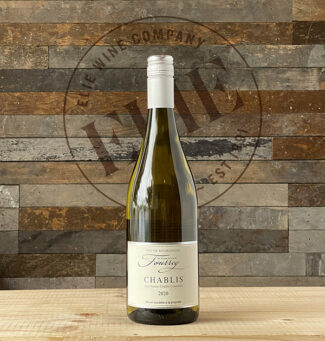 Domaine Fourrey, 2020 Chablis ($26)
Domaine Fourrey, 2020 Chablis ($26)
From a 30-acre site where vines average 25 years old, the wine shows pure green-apple and toasted almond with an almost saline-like intensity; it’s a letter-perfect oyster wine, nicely nuanced with graphite, grapefruit and lemon.
Christian Moreau Père & Fils
The pedigree of the Moreau name dates to 1814 when barrel-maker Jean-Joseph Moreau founded a wine-merchant trading firm in Chablis. Although that original firm has changed hands several times, including a sale to Hiram Walker in 1985 and again to the Boissets of Nuits-Saint-Georges in 1998, the Moreau family never relinquished control of their vineyards. Domaine Christian Moreau Père et Fils began vinifying at the turn of the 21st century, and is now under the watchful care of Fabien Moreau: “Being the 6th generation of the family producing wines was and still is a challenge for me, trying to avoid the pressure you could have with this wine heritage. But with the quality of the vineyard that my family passed on, the basis of the expression of our wines is here, and our work is to honor our terroirs.”
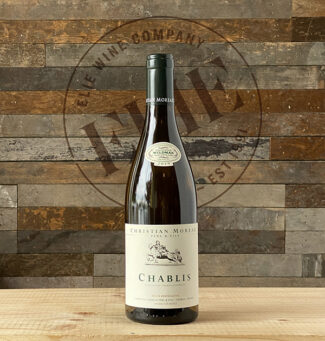 Christian Moreau Père & Fils, 2019 Chablis ($41)
Christian Moreau Père & Fils, 2019 Chablis ($41)
A versatile and affordable village Chablis that displays a taut, mineral-tinged sharpness alongside aromas white hawthorn flowers and a cut of citrus.
Domaine Servin
The Servin family has owned vines in Chablis since 1570. Somewhat more recently (1998), the estate has been managed by François Servin, a fervent believer in the ageing capacity of Chablis. His keen interest in old vintages has convinced him that malolactic fermentation and late bottling increases the ageing capacity of his wines. He is a proponent of oak, but never to add flavor—only to enhance the natural fruit by adding volume and length. Servin’s release from the prized Les Clos and Bougros vineyards are aged in barrels for several years; Les Preuses is a judicious blend of barrels and stainless-steel vats; and Blanchot, a more fragile and elegant wine, is fully vinified entirely in stainless steel. The aim is to bring out the real character of each plot.
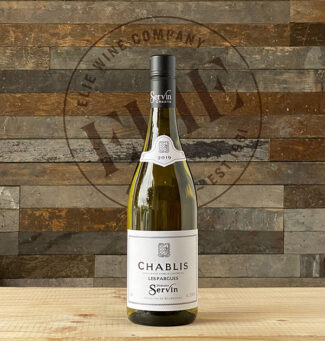 Domaine Servin ‘Les Pargues’, 2019 Chablis ($28)
Domaine Servin ‘Les Pargues’, 2019 Chablis ($28)
Les Pargues is a two-acre lieu-dit which has the same exposure as Vaillons and Montmains; the vines are approximately 50 years old and the wine is aged in older neutral barrels. The wine is elegantly textured with aromas evocative of stone fruits, citrus, fresh honey and white flowers. On the palate, these scents are echoed with a bright uplift of passion fruit, mint and lemon curd.
Gibert Picq & Ses Fils
Wine Advocate’s William Kelley refers to Domaine Picq as “One of Chablis’s finest, a source of concentrated and incisive Chablis that are well worth seeking out.”
Based in the small village of Chichée, the multi-generational Domaine Gilbert Picq is today run by Gilbert’s children; Pascal tends the vines while Didier makes the wines and Marilyn works the office. Of the property, Didier explains that Chichée has long been used by négociants as a source of high-quality wine to go into their large Chablis blends. In the past its name rarely appeared or was discussed, which suited the large merchant’s needs. “When Chablis’ Grand and Premier Crus were demarcated, Chichée was largely overlooked,” he says. “On one hand, this is a shame, as the terroir is classic Chablis with a high proportion of Kimmeridgian clay in the soil and vineyards well angled to catch the sun. On the other hand, our relative anonymity is a boon to consumers since the quality-to-value ratio here is excellent. One can still buy wines from the regions finest domains for little more than the blends of the large négociants.”
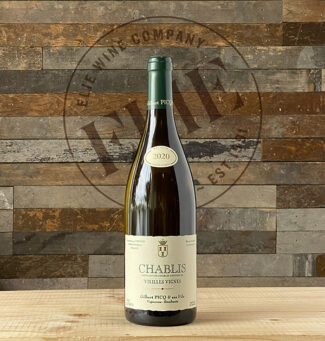 Picq & Ses Fils ‘Vieilles Vignes’, 2020 Chablis ($31)
Picq & Ses Fils ‘Vieilles Vignes’, 2020 Chablis ($31)
From three plots of hillside vines that are all over 50 years old, vinification and aging takes place in stainless steel and fermentation relies exclusively on natural yeasts. Harvested at the end of August, the wine is more delineated and expressive on the nose than the domain’s Chablis Village—the palate is penetrating on the entry and may be seen as a quintessential old-school Chablis with light marine and bitter lemon notes and a smack of oyster shell on the finish.
Petit-Chablis: The Little Brother
Just as Grand (French for ‘big’) Cru represents the smallest of the four Chablis appellations, Petit (French for ‘small’) Chablis is nearly five times the size of the Chablis AOP, overlapping most of it and extending beyond it. These wines generally originate in lower-quality terroirs and the wines they produce are predictably lesser in quality.
Petit Chablis is usually the first to be harvested, and from grapes with less hang time comes wine that is simple, refreshing, acidic and bright on the palate. They show floral notes of hawthorn and acacia mingled with lemon-lime and grapefruit over a mineral base that is said to resemble the odor of a flintlock gun.
Louis Michel & Fils
Folks who say ‘yes’ to the magic of Chablis will appreciate the things to which winemakers Jean-Loup Michel and his partner/nephew Guillaume Gicqueau-Michel say ‘no’: Oak, bâtonnage and added yeast. Since 1970, fermentation has taken place entirely in stainless steel to preserve the essence of the Chardonnay grape—Michel & Fils is perhaps the best known proponent of entirely oak-free wines, even in his three Grand Cru offerings. Bâtonnage—the stirring of the lees to make the wine fatter and richer—is atypical in Chablis, and at Michel & Fils, unheard of.
The Michel family has been a presence in Chablis since 1850. Situated in the heart of the village, the estate covers 60 acres that spread across over the very first slopes that were discovered by Cistercian monks in the 11th century and include three Grand Crus (Grenouilles, Les Clos, and Vaudésir), seven Premier Crus (Montmain, Forêts, Butteaux, Butteaux “Vieilles Vignes”, Vaillons, Séchets, Fourchaume and Montée de Tonnèrre).
The domain also produces village-level Chablis from twenty named communes and a Petit Chablis; offering wines from all four sub-appellations make Louis Michel a rarity among local producers.
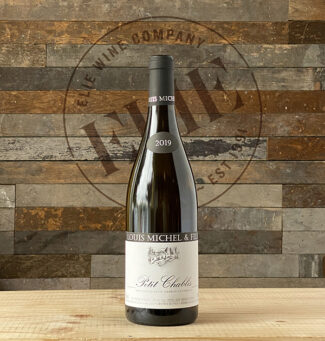 Louis Michel & Fils, 2019 Petit Chablis ($27)
Louis Michel & Fils, 2019 Petit Chablis ($27)
From right bank slopes where the soils are shallow and stony, though rich in organic matter. Rather than the Kimmeridgean soils that underlie Grand and Premier Cru climats, the limestone here is Portlandian, which is younger and fossil-free, producing wines with more citrus and less chalk. This wine comes from vines planted between 1991 and 1999 and has undergone spontaneous malolactic fermentation, leading to a pale yellow wine with greenish glints; it is lively with acid and shows apple peel, white flowers, grapefruit and peach.
Domaine Ventoura
Domain Ventoura maintains that it is first and foremost a family domain, but the bond of loyalty between the members is displayed equally in their bond with the land. What began in the 1950’s on Auguste Ventoura’s small cereal farm (with a single vine) has grown in scope and ambition through the input of each successive generation.
Claude, Auguste’s son, developed the farm into a 27-acre domain in the commune of Fontenay. The grapes had been sold to cooperatives for 25 years; Claude began to bottle them on premise. Now his son Thomas has taken a keen interest in the property and explains the philosophy which has transformed the tiny farm into a force with which Chablis reckons: “Whether it is a Petit-Chablis, Chablis or Chablis Premier Cru, to compose our wines we focus on ‘rocks and leaves.’ In order to respect what is essential to us, a detailed knowledge of those rocks and leaves is imperative. This knowledge comes from daily observations and presence on our plots through the seasons. It is, of course, the right time for a couple technical interventions that will take the development and the growth of the vine to the harvest. It is a special time to follow the health and needs of the vine stock and also the perfect occasion to get a glimpse at what they will translate into.”
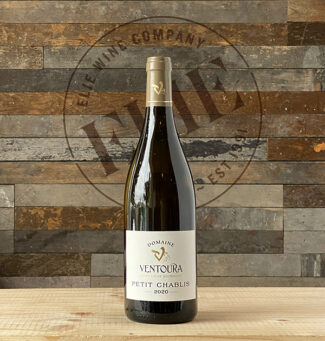 Domaine Ventoura, 2020 Petit Chablis ($25)
Domaine Ventoura, 2020 Petit Chablis ($25)
Chardonnay from Portlandian limestone; vines were planted in 1989 to 2010 in two sites for a total of 25 acres. The wine undergoes spontaneous malolactic fermentation, leading to a pale yellow hue with greenish glints; it is lively with acid and shows apple peel, white flowers, grapefruit and peach.
A note …
About Joyce, Bloom and The In-Store Tasting
In the Roaring Twenties, such literary eroticism had its price: ‘Ulysses’ was banned in the United States from 1922 (the year it was published) to 1933, a period of time that roughly mirrors Prohibition. James Joyce’s iconic novel follows—in minute and exhilarating detail—three Dubliners as they meander through the course of a single day, June 16, 1904, and is today considered one of the most important works of literature ever composed.
Much of the action in ‘Ulysses’ takes place in pubs, where Leopold Bloom—the novel’s main protagonist—shows a particular penchant for Burgundy. In a passage that made the very real ‘Davy Byrne’s Pub’ famous, Bloom orders a Gorgonzola sandwich along with his customary glass of Burgundy.
We won’t sell you cheese or bread, because we’re a wine shop. But while Joyce fans across the globe celebrate ‘Bloomsday 2022’ by marathon Joyce readings, pub crawls and bubbly walks through Dublin, we will be pouring a variety of Chablis wines on premise on Thursday, June 16 from noon to 7pm, and you are invited to join us at anytime convenient for you.
“Glowing wine on his palate lingered swallowed. Crushing in the winepress grapes of Burgundy. Sun’s heat it is. Seems to a secret touch telling me memory. Touched his sense moistened remembered. Hidden under wild ferns on Howth below us bay sleeping: sky. No sound. The sky… O wonder! Coolsoft with ointments her hand touched me, caressed: her eyes upon me did not turn away. Ravished over her I lay, full lips full open, kissed her mouth. Yum…. She kissed me. I was kissed. All yielding she tossed my hair. Kissed, she kissed me.”
James Joyce, ‘Ulysses’
- - -
Posted on 2022.06.14 in Petit Chablis, Chablis, Bourgogne Côtes d'Auxerre, Saint-Bris, France, Saturday Sips Wines, Burgundy, Wine-Aid Packages
Featured Wines
- Notebook: A’Boudt Town
- Saturday Sips Wines
- Saturday Sips Review Club
- The Champagne Society
- Wine-Aid Packages
Wine Regions
Grape Varieties
Albarino, Albarín Blanco, Albarín Tinto, Albillo, Aleatico, Aligote, Arbanne, Aubun, Barbarossa, barbera, Biancu Gentile, bourboulenc, Cabernet Franc, Caino, Caladoc, Calvi, Carcajolu-Neru, Carignan, Chablis, Chardonnay, Chasselas, Cinsault, Clairette, Corvina, Counoise, Dolcetto, Erbamat, Ferrol, Frappato, Friulano, Fromenteau, Gamay, Garnacha, Garnacha Tintorera, Gewurztraminer, Graciano, Grenache, Grenache Blanc, Groppello, Juan Garcia, Lambrusco, Loureira, Macabeo, Macabou, Malbec, Malvasia, Malvasia Nera, Marcelan, Marsanne, Marselan, Marzemino, Mondeuse, Montanaccia, Montònega, Morescola, Morescono, Moscatell, Muscat, Natural, Niellucciu, Parellada, Patrimonio, Pedro Ximénez, Petit Meslier, Petit Verdot, Pineau d'Aunis, Pinot Blanc, Pinot Gris, Pinot Meunier, Pinot Noir, Pouilly Fuisse, Pouilly Loche, Poulsard, Prieto Picudo, Riesling, Rondinella, Rose, Rousanne, Roussanne, Sagrantino, Sauvignon Blanc, Savignin, Sciacarellu, Semillon, Souson, Sparkling, Sumoll, Sylvaner, Syrah, Tannat, Tempranillo, Trebbiano, Trebbiano Valtenesi, Treixadura, Trousseau, Ugni Blanc, vaccarèse, Verdicchio, Vermentino, Xarel-loWines & Events by Date
- July 2024
- June 2024
- May 2024
- April 2024
- March 2024
- February 2024
- January 2024
- December 2023
- November 2023
- October 2023
- September 2023
- August 2023
- July 2023
- June 2023
- May 2023
- April 2023
- March 2023
- February 2023
- January 2023
- December 2022
- November 2022
- October 2022
- September 2022
- August 2022
- July 2022
- June 2022
- May 2022
- April 2022
- March 2022
- February 2022
- January 2022
- December 2021
- November 2021
- October 2021
- September 2021
- August 2021
- July 2021
- June 2021
- May 2021
- April 2021
- March 2021
- February 2021
- January 2021
- December 2020
- November 2020
- October 2020
- September 2020
- August 2020
- July 2020
- June 2020
- May 2020
- April 2020
- March 2020
- February 2020
- January 2020
- December 2019
- November 2019
- October 2019
- September 2019
- August 2019
- July 2019
- June 2019
- May 2019
- April 2019
- March 2019
- February 2019
- January 2019
- December 2018
- November 2018
- October 2018
- September 2018
- August 2018
- July 2018
- June 2018
- May 2018
- April 2018
- March 2018
- February 2018
- January 2018
- December 2017
- November 2017
- October 2017
- September 2017
- August 2017
- July 2017
- June 2017
- May 2017
- April 2017
- March 2017
- February 2017
- January 2017
- December 2016
- November 2016
- October 2016
- September 2016
- August 2016
- July 2016
- June 2016
- May 2016
- April 2016
- March 2016
- February 2016
- January 2016
- December 2015
- November 2015
- October 2015
- September 2015
- August 2015
- July 2015
- June 2015
- May 2015
- April 2015
- March 2015
- February 2015
- January 2015
- December 2014
- November 2014
- October 2014
- September 2014
- August 2014
- July 2014
- June 2014
- April 2014
- March 2014
- February 2014
- January 2014
- December 2013
- November 2013
- October 2013
- September 2013
- August 2013
- July 2013
- June 2013
- May 2013
- April 2013
- March 2013
- February 2013
- January 2013
- December 2012
- November 2012
- October 2012
Search



